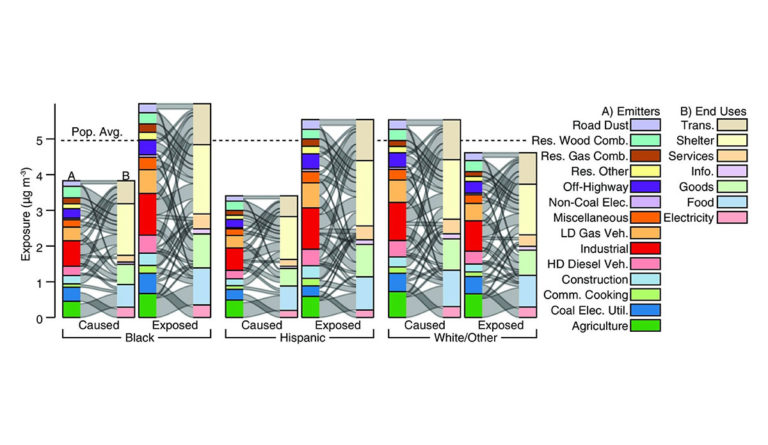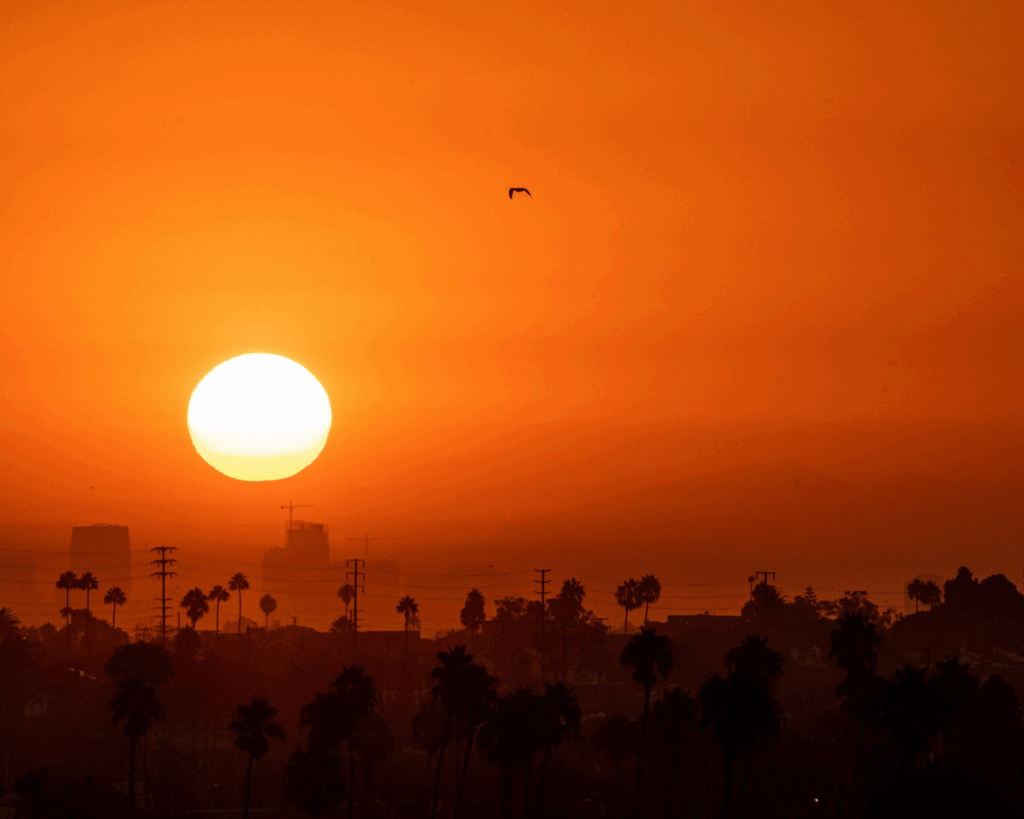Pollute Less, Suffer More
Communities of color experience pollution inequities as Whites experience less exposure than Black and Hispanic people to the air pollution they create.

Read Time: 2 minutes
Published:
Communities of color are disproportionately exposed to harmful air particulates. A recent study by Christopher Tessum and colleagues compared the pollution-related burden experienced by White, Hispanic, and Black people in the US to the environmental pollution contributed by each group through their consumption of good and services. The greater burden on communities of color is referred to as “pollution inequity” and is displayed above, presented as “exposed” and “caused” vertical bars, divided into racial/ethnic groups.
The figure above shows relationships between concentrations of fine particulate matter (PM2.5), emitters, end uses, and end users. For example, if you look for agriculture (dark green) in the figure, you’ll see that the agricultural industry (emitter) creates pollution (most likely from agricultural burning, and usage of non-road vehicles) when raising crops and animals, releasing PM2.5 into the environment. The crops that are cultivated on farms are distributed for food (light blue). This food (end use) is then consumed by human beings (end users). The end users can be categorized according to racial/ethnic groups.
The authors found that particulate matter pollution is largely caused by Whites consuming goods and services. Yet Whites experience less exposure than Black and Hispanic people to the air pollution they create. The authors describe this phenomenon as a “pollution advantage.” Blacks and Hispanics, on the other hand, breathe in more PM2.5 than they produce, carrying a “pollution burden.” Black people were more exposed than Whites to every source of pollution.
Databyte via Tessum, Apte, Goodkind, Muller, and et al., Inequity in Consumption of Goods and Services Adds to Racial-Ethnic Disparities in Air Pollution Exposure. Proceedings of the National Academy of Sciences of the United States of America.



